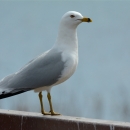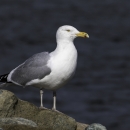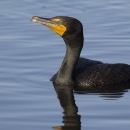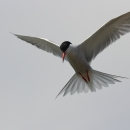Seasons of Wildlife
Throughout the late spring, summer and early fall, you are likely to spot ring-billed gulls, herring gulls, double-crested cormorants, American white pelicans and the state-threatened common tern, either nesting or resting on the rocky islands. Please use binoculars and camera lenses to get a closer look at the wildlife, while staying at least 100 yards offshore.
Featured Species
Both Hennepin and Spirit islands are used by colonial nesting species, including ring-billed gulls, herring gulls, double-crested cormorants, American white pelicans and the state-threatened common tern.
Mille Lacs National Wildlife Refuge hosts one of only five common tern breeding colonies in Minnesota. The common tern is currently listed as a state-threatened species, a Minnesota species in greatest conservation need, and a U.S. Fish and Wildlife Service conservation priority species. Mille Lacs Lake offers an abundance of minnows which common terns require to survive. The pea gravel on Hennepin Island provides a camouflaged nesting substrate and its remote location protects the ground nests and young birds from predators such as fox or mink. Periodically, pea-sized gravel is brought over to Hennepin Island during the winter to replace a portion of what is lost to ice scouring and wave action.
Double-crested cormorants began nesting on Mille Lacs National Wildlife Refuge in 1998 and now boast a thriving colony. Their population has been rebounding since the 1970s. DDT and other contaminants had a detrimental effect on these fish-eating birds. After they were banned, birds like cormorants have recovered across most of their population range.





